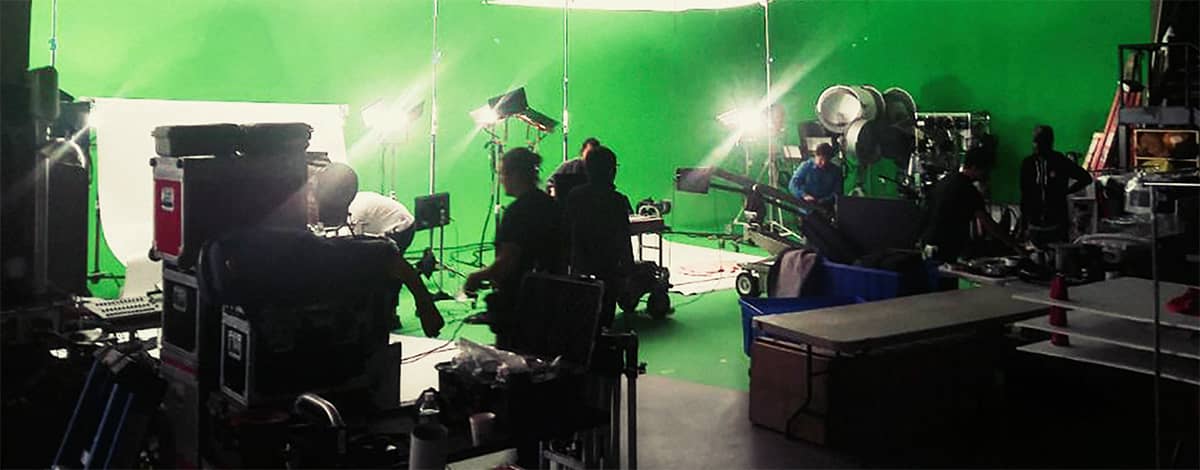 As budgets get tighter, practical sets get smaller and less-detailed. With Virtual Sets, it’s not hard to build stunningly-realistic, highly-detailed environments without significant added costs. As the East Coast’s first Virtual Backlot, we’ve spent years mastering the methodology. With new Virtual Set options making news, we’re sharing some insights on the state of the art, today, and strategies to make it work for you.
As budgets get tighter, practical sets get smaller and less-detailed. With Virtual Sets, it’s not hard to build stunningly-realistic, highly-detailed environments without significant added costs. As the East Coast’s first Virtual Backlot, we’ve spent years mastering the methodology. With new Virtual Set options making news, we’re sharing some insights on the state of the art, today, and strategies to make it work for you.
Are Next-Gen LED Virtual Sets Ready to Roll?
There’s some cool emerging technology, such as Virtual Set Unreal Engine solutions, that promise a lot—but do they deliver…? We never miss an opportunity to talk shop with our VFX colleagues out in Hollywood. As the East Coast’s early-adopter VSet soundstage, we’ve been interested in the new technology that’s being used on big-budget productions like “The Mandalorian.” This cutting-edge LED Video Wall technology uses Epic’s Unreal game engine to generate elaborate digital backdrops in real-time.
Fascinating technology, but we’re waiting to buy-in. Here’s why:
The Video Wall technology that’s powered by Unreal is made for Hollywood where budgets are gigantic. Their pipeline requires all Virtual elements to be finished and approved in advance of or during a shoot. In commercials, the CG is never completed ahead of shoot. There’s always a lengthy client approval process, and it takes time to get everyone onboard. To take advantage of the real-time interactivity that the new technology offers, you need a team of five or six operators working on set in real-time to operate the CG projection, to track cameras, and to color-correct, live. This team of onsite technicians takes up production time and space, and the cost quickly adds up. Not to mention Covid… eek.
What seems like a creative utopia in Hollywood is risky and cost-prohibitive for most productions.
First of all, when you do it live, the construction of a CG set takes up valuable production time while your cast and crew waits. Fiddling with CG, tweaking color correction to match CG to live action, and other processes can easily be handled in post. Again, it’s not an efficient use of production time outside of big-budget Hollywood projects.
The technicians who specialize in this work are rare, and they work in a posthouse—a dark, quiet room stocked with snacks. The real-time nature of the LED wall technology puts them under intense pressure, similar to working a live event. Their skill sets and personalities led them to post-production work (for a reason), so even productions that can find and afford such an expensive team are taking a significant risk. If any technician in the group can’t handle this new high-stakes, real-time way of working, the whole project crashes, live…
To keep budgets and social distancing in check, we’re sticking with the tried and true tech for now. We generate rough composites in our Virtual Backlot and let the tech maestros do what they do best, behind the scenes.
Today’s LED Walls come with extreme technical limitations.
The other reason we’re waiting for the next iteration of LED Wall-based Virtual Sets is that the makers are still working out the kinks. When the technology works, it’s spectacular, but synchronizing a wall of LEDs is no small feat. Technical difficulties persist—such as unwanted moiré patterns and poor off-axis response.
Another issue is that the LED screens don’t support off-speed cinematography. Shooting a wall of monitors limits creativity because the monitor’s refresh rate needs to sync with the camera’s frame rate. With the LED screen limited to a frame rate of 30 or 60 frames per second, you also can’t shoot high speed for slow motion. And even though 60 frames per second is technically supported, the sensor still receives half the light, making the image noticeably dimmer.
We love this new technology, but it’s not yet ready for practical implementation outside of gigantic Hollywood budgets. We’re sticking with efficient, affordable solutions, and we will keep you posted on new developments as we revolutionize the Industry.
New Jersey leads the nation in safe shoots
and Hoboken is closer to midtown than Brooklyn.

If you haven’t shot in NJ lately,
there’s a lot to catch up on.
